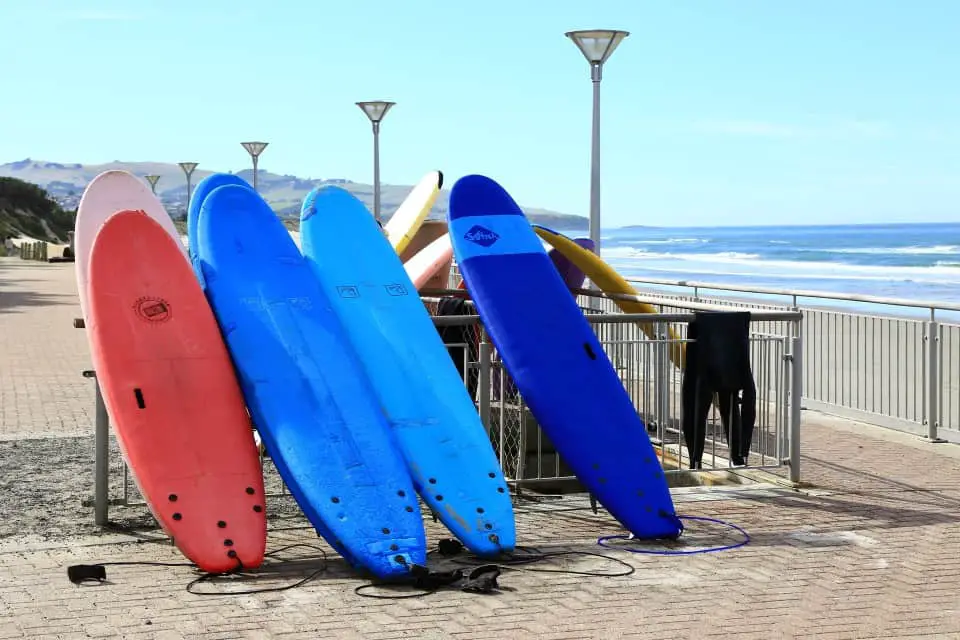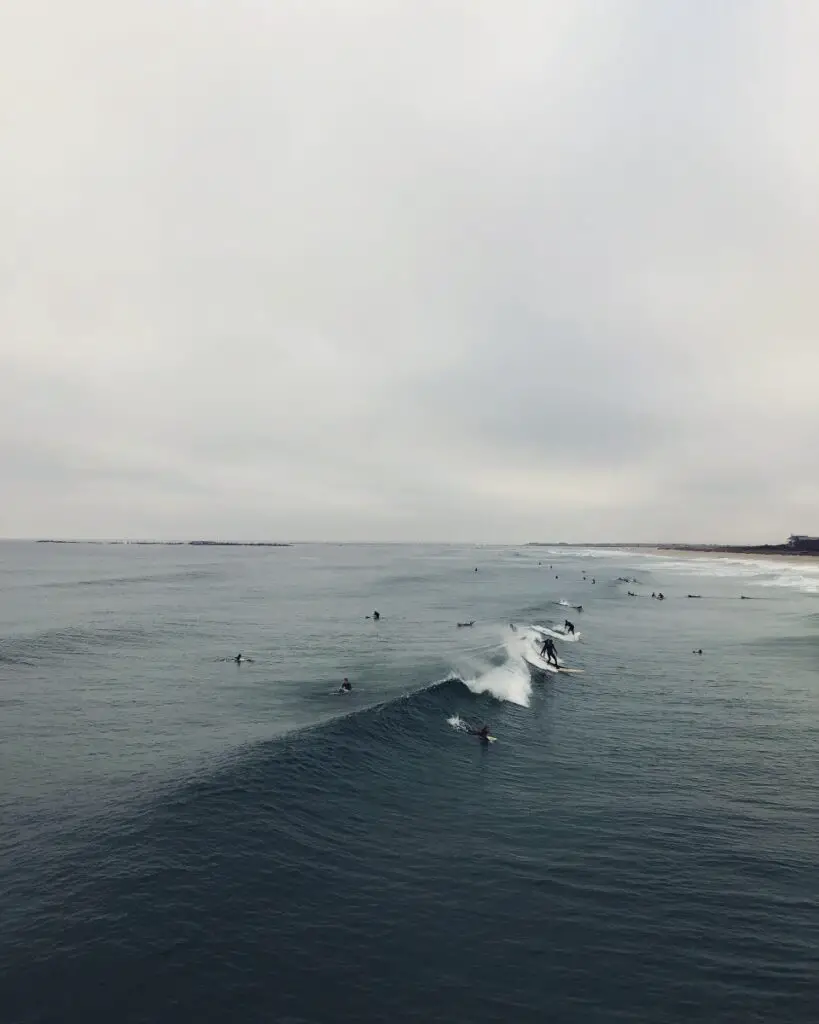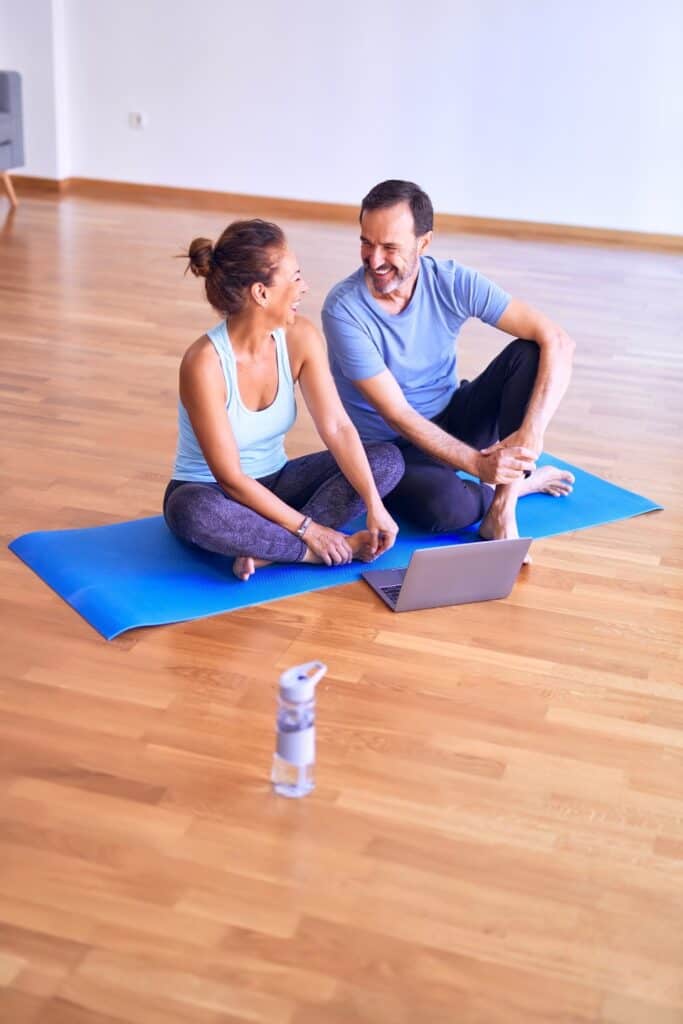For one reason or another, many people consider learning to surf for the first time when they are older and oftentimes they have reservations about doing so. Can you learn to surf at 40? At 50? Well, you’re in luck as we really do believe you can learn to surf at any age.
The thing is, no one says it’s easy to surf. In fact, learning to surf is really difficult. But if you approach it with the right attitude and with the right strategy you’ll have the best chance of picking it up and having a blast doing so.
This guide will help you on your way to learning to surf at whatever age you are.
The Benefits of learning to surf at an older age
Surfing is one of the most enjoyable activities that you can take part in and it can be enjoyed at any age. Although most people start trying to learn as children or teenagers, it can certainly be done later on. We won’t lie – learning as a kid certainly has its advantages but really that goes for anything. However, that’s not to say that there aren’t benefits that come with learning a new skill at an older age. I always think about one of my friends that I met surfing over the years. He started surfing in his late 30’s and was the most surf stoked and obsessive surfer that I knew. He surfed more than anyone else and always longer. As a result within a few years he quickly went from absolute novice to a great surfer.
Some of the key benefits of learning to surf later are:
Greater Appreciation
At an older age you will likely appreciate surfing more than younger people, especially as you start to find your feet with it. Children might try surfing a few times and give it up just as quickly whereas an adult who’s genuinely keen and committed to learn to surf will bring a certain amount of wisdom to the task and will appreciate how amazing it is once you start actually catching waves for the first time
A fun form of exercise
Exercise doesn’t get much more fun than surfing. As we get older, we all know the importance of keeping active, but going for a run, or training at the gym is so boring and particularly on repetition it is really tedious. Surfing involves movements throughout the whole of body and is a serious work out, but most of the time we don’t really think of it as exercise. It’s an escape from the day to day and (most of the time) it is pure enjoyment.
Physical benefits
As we mentioned, surfing works out so many parts of the body. In terms of strength, particular focus is on the shoulders and upper back. Paddling a surfboard is a serious cardio workout as well as activation for the core. Popping up and surfing involves a combination of flexibility, agility, balance and coordination. Fundamentally, it’s a range of activities that work your body in several ways.
Mentally rewarding
Physical benefits aside, the positive mental results associated with surfing are considerable. There are very few activities which will lead you to narrowly focus and not think of anything else in the moment, and surfing is one of them. On top of that, the act of surfing – getting fresh air, being in the water and in the ocean is very therapeutic and can be an active stress reliever. Many surfers will tell you how their surfing is mental reset and such a vital part of their routine. Lastly, the fact that surfing is challenging and something that you are continually working to improve is a major positive. We all need hobbies that challenge us and that we can commit to for the long term.
Social Benefits
Surfing alone is fine, but surfing with friends is better. As you learn to surf and find yourself surfing with friends and sharing waves, you’ll realise how special these moments can be. Bonds and friends formed through surfing are unique.

Prerequisites for learning to surf at 40 or beyond
Leave your ego at the door
Yes, most people learning to surf are younger and yes you will look stupid for a while as you try to surf and fall off repeatedly. Yes, you’ll likely take a beating and come back to the beach feeling punished from time to time. But this is not a time to be precious nor to care about what you look like or what people may think. Everyone goes through this phase when learning to surf.
Try to have a positive attitude and you’ll have 10 x more fun and be much more successful. After all, surfing is fun. We shouldn’t treat it so seriously and have a laugh at ourselves as we “kook out” and fall off our surfboards.
You will take a beating
The first several surf sessions will be quite tough on you. Paddling is hard work, even on calm flat water, but when you add waves into the mix it gets a lot harder. Falling off and climbing back on over and over again will leave you feeling pretty sore by the end of the session and you’ll likely feel pretty wrecked.
Muscles that you probably didn’t know you had will ache and you’ll have salt water leaking out your nose some hours after the surf session. These are just the realities of the learning experience so you will need to accept that. Just take note that it will get easier!
Physical shape
Part of the beating you take when learning comes down to the physical fitness required to surf. As a learner it’s extra hard as you’re trying to learn the individual components of surfing which are hard enough as well as paddling and jumping up which are strenuous activities in their own right.
So fundamentally, if you’re not in fair physical condition you will likely have a hard time. Not to say that you need to be running marathons or anything like that, but if you lose your breath walking down the street or running for a minute or two, then surfing will be a significant challenge. Also you will need some degree of flexibility in order to run through the various aspects of surfing.
Committed to learn (& time)
Lastly, learning to surf is an ongoing process and it takes a long time. People surf for many years but are still learning and looking to improve. As such, if you want to learn to surf you need to be realistically committed for the long term and willing to put in a substantial and consistent amount of time into learning.
It’s not the kind of sport which you can pick up a few days a year and improve at. There needs to be some regularity and consistency in the amount you surf and that’s the case for learning to surf at any age.

5 tips to learn to surf at any age
1. Fitness:
As we’ve highlighted so far, physical fitness forms a pretty integral part of being able to learn to surf, and particularly if you are trying to learn at an older age your fitness condition will likely make or break your enjoyment and success with the sport. Studies have indeed shown that surfing requires a higher level of aerobic endurance as well as muscular power on average than most sports.
There are several activities that when utilised as training for surfing can greatly assist with surf fitness.
Running
One of the more obvious activities is any kind of cardio workout such as running. A simple activity such as running or jogging has many benefits for surfing a few of which include:
- Activation of muscles including calves, shins, quadriceps, hamstrings and glutes
- Burns unwanted calories and helps to lose weight
- Strengthens the heart and cardiovascular system
- Strengthens the bones
- Increases endurance
Running is a great way to keep you motivated and fit, which will make you want to go surfing more and be able to surf for longer when you do without feeling as quickly fatigued. A short 30 min jog 2 to 3 times per week will make a significant difference to your fitness within a short period of time.
Read later– Do You Say Do or Go Surfing?
Swimming
Swimming is a great substitute for surfing as it utilises the same muscle groups used when paddling a surfboard. Afterall, paddling is the most consistent part of surfing and is exactly what tires you out the most.
Swimming laps at the pool also helps in the sense of increasing your comfort and ability in the water. To really get the most out of your time in the water try to use some interval training and variations in your lap swimming. The benefit of this compared to simply swimming laps at the same pace is that it mimics the start and stop, and sudden bursts of paddling power that you need when you are surfing.
Yoga/Pilates
As well as cardio fitness, flexibility, core strength and balance are aspects that are vital in surfing. Yoga and pilates are fantastic activities which focus on these attributes. Further, they align with surfing’s zen like ability to make you forget about your troubles or the day that has been and singularly focus on the task at hand.
There are so many forms of yoga and pilates available these days and for beginners all the way through to experts. Classes and abundant and online yoga programs are readily available and can be very effective for practice a few times a week.
Surfing
Last but not least, simply surfing more is the best physical training you can do to improve your surf fitness. Although we think cross training with the above activities is very effective, the act of surfing itself is the most important element.
2. Surfing lessons
When starting out people often wonder if they need surfing lessons or whether they can learn to surf on their own. We believe that it can do no harm to take some initial lessons. You’ll be shown some basic surfing rules and techniques, using some user friendly beginner surfboards and in the best suited learn to surf break in your location. After a few basics and mastering some basic fundamentals, it will be up to you to keep the learning process going yourself.
3. Right surfboard for you
One of the most critical things you can do when learning to surf is to ride the best suited surfboard for a beginner. There’s a range of opinions with regard to what type of board is best – the shortboard vs longboard debate. If you’re getting into surfing lately, and want to fast track your learning in the initial phases – in our opinion you can’t go wrong with a longer, wider and thicker surfboard.
A mini-mal or longboard will tick all these boxes, be far easier to paddle and much more stable for standing up and riding. The quicker that you are able to start surfing waves, the better you will start improving. If your board is too short this will be much more difficult and take much more time.
4. Expectations
It’s important when starting out to realise that learning to surf is hard and it does take a long time. Basically you need to have your expectations in check – you’re unlikely to be carving and turning on waves in the way that some people make look so easy. But that doesn’t really matter – you will find as soon as you start catching any kind of wave, it will be such a rewarding experience. The truth is surfing is a continual learning process – even those who have surfed for decades are constantly looking to improve and always learning in the water. The ongoing challenge of surfing is part of what makes it so special and rewarding.
5. Commitment and regularity
Lastly, by virtue of taking so long to learn and to master, it’s important to properly commit to the cause. If you really want to learn and improve quickly you will need to commit to surfing as regularly as possible.

Final Thoughts
We are firm believers that you can learn to surf at any age. It’s never really too late, the most important thing is some self belief and some basic confirmation that you are physcially up to the task. Like many things, surfing is not a sport which you can just pick up in an hour and start enjoying. It’s a long term commitment.
Surfing can add so much to your life, and so there’s no more time to lose. Book a surf lesson and get out in the water!
FAQ
Can you learn to surf at 50?
If you’re looking to learn to surf at 50, there’s absolutely no reason why you can’t, assuming you have a reasonable standard of fitness and good general flexibility. Learning to surf does not mean you have to go and surf big waves. In fact there’s a lot of fun to be had surfing small waves which don’t have impact and difficulty that you can face in larger waves.
